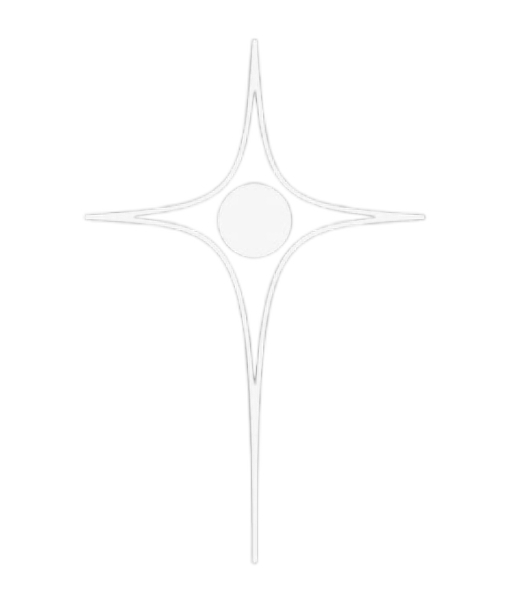784𝕸
⦵2025
To Build A Machine
✶ Dreams as a Data Source
Beyond Probability: Integrating Intuition into Scenario Analysis
Future research is often framed as an exercise in rational foresight—a discipline rooted in probability, modeling, and structured scenario-building. Yet, the future does not always emerge through linear logic. Instead, it often reveals itself in patterns, symbols, and intuitions—in the spaces between perception and cognition, anticipation and realization.
In Buddhist-influenced traditions, precognition is not a supernatural anomaly but an emergent capacity of the mind—a refinement of intuition, arising through altered states of consciousness such as dreams and deep meditation (Roney-Dougal, 2018; Harris, Milfont, & Hornsey, 2022). Western approaches, by contrast, have largely ignored such frameworks, bound by methodologies that favor explicit reasoning over tacit knowledge.
This work explores whether intuition itself can be structured, measured, and integrated into futures research.
C/O Giáng Mi Nguyen
784𝕸
⦵2025
To Build A Machine
✶ The Core Hypothesis
1️⃣ Dreams function as expressions of intuition.
2️⃣ Precognition is a form of intuition.
If these statements hold true, then traditional scenario analysis lacks an essential component—one that may provide deeper insight into emerging futures.
From a neuroscientific perspective, dreams are not random. They are structured by the same theta oscillations responsible for pattern recognition, associative learning, and insight (Sederberg et al., 2003). These same neurophysiological mechanisms have been implicated in intuitive decision-making—suggesting that experiences perceived as precognitive may be a result of the brain’s ability to process time differently than waking consciousness allows (Bolte & Goschke, 2005).
Carl Jung (1974) theorized that the unconscious does not follow a chronological order—that its contents arise in symbols and archetypes, which may serve as both psychological reflections and premonitory signals. If so, then dreams could offer an untapped resource for understanding the trajectory of the future.
Classical scenario-building relies on structured methodologies—yet, what if the future is already embedded in the unconscious?
C/O Giáng Mi Nguyen
784𝕸
⦵2025
To Build A Machine
✶ OPERATIONALIZING INTUITION: A NEW METHODOLOGY
To test these hypotheses, this research proposes an experimental approach that combines neuroscience, biometrics, and immersive technology to investigate whether intuition can be operationalized as a data source for future scenario-building.
📡 1. Measuring Psi Rate
A study of Buddhist monks, testing for statistical deviations in precognitive decision-making through psi-scoring experiments (Radin, Bem). The objective is to examine whether deep meditative states correlate with an increased capacity to anticipate future stimuli.
🧠 2. Tracking Theta-Gamma Coupling in REM & Meditation
Utilizing EEG and biometric data to compare neural activity during REM sleep and Shamatha meditation. The hypothesis is that theta-gamma coupling, known to be involved in memory consolidation and insight generation, is also active during precognition-like cognition.
🎭 3. Simulating REM-Like States in Wakefulness
Using a combination of VR-based visual stimulation, layered/modulated binaural beats, and guided hypnagogic meditation, we seek to induce a REM-adjacent cognitive environment while tracking intuition and symbolic pattern recognition.
🌀 4. Scenario AI for Future-Building
Developing a biometrically informed scenario-generation system, wherein intuition-driven data (such as psi-scoring and dream-reported symbols) is integrated into AI-driven scenario modeling, generating dynamically evolving future narratives.
C/O Giáng Mi Nguyen
784𝕸
⦵2025
To Build A Machine
✶ Why This Matters
If intuition can be systematically integrated into futures research, then scenario analysis must evolve beyond rationalist methodologies to include:
🔹 Dreams as a structured form of unconscious knowledge production.
🔹 Precognition as a neurobiological phenomenon rather than a metaphysical claim.
🔹 Intuition as an emergent cognitive process, not a statistical anomaly.
This is not about proving precognition as an isolated event.
It is about asking whether existing epistemologies of future-building have overlooked an essential variable.
By bridging neuroscience, immersive technology, and futures research, this work proposes a new coherence—a model that acknowledges the fluid, emergent nature of human perception and its potential role in understanding what has not yet arrived.
In a world that increasingly relies on big data and AI-driven predictions, perhaps the most valuable tool for navigating the unknown has been within us all along.
We simply have not yet learned to listen.
C/O Giáng Mi Nguyen
784𝕸
⦵2025
To Build A Machine
✶ JOIN THE RESEARCH
🔹 [Read the Full Paper]
🔹 [Participate in the Experiment]
🔹 [Support the Research]
🚀 A New Coherence: Exploring the Edges of Human Perception in Future Research.

